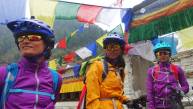In this installment of Women in the Mountains, we caught up with photographer and filmmaker Leslie Hittmeier of the Never Not Collective. Never Not Collective photo.
Film screenings are like holidays for the outdoor industry. They’re a time for us to celebrate the upcoming season, and get fired up. Each year we rally our friends to gather in a local movie theater, or better yet, a makeshift setup in our local climbing gym or bike shop. Craft beer flows like water and there are more Patagonia half zips and Chaco sandals in the crowd than at your local gear shop. The real magic starts when the lights are dimmed. The footage gets rolling and the crowd goes silent. When tricks are stomped or routes sent, inhibition is lost, bringing out the hoots and hollers. After the credits roll, we get up, stretch, and head back home dreaming about what’s possible.
RELATED: Rent 'Pretty Strong' on Vimeo Now
But for some people in that crowd, leaving the theater doesn't always come with that stoked and invigorating high. If you're a woman, a person of color, LGTBQ, or indigenous, odds are you weren't represented well or even at all.
There’s a saying by Marian Wright Edelman that simply explains: “you can't be what you can't see.” Representation influences our psyche whether or not we choose to admit it. It demonstrates what’s possible, it gives us a road map to follow, and most importantly, it shows us that we belong and we’re valued.
For a group of female climbers and jills-of-all-trades that call themselves the Never Not Collective, working in the industry led to frustration by the lack of women in feature-length climbing films. Given the sport’s talented and large pool of female athletes, the disconnection between reality and film didn’t add up. Where are the lady crushers on screen, they kept asking? Rather than wait for an answer, this team set out to make their own film, Pretty Strong. It became a tough three-year process, with many hiccups along the way, but through it all, they succeeded at creating a high-production piece showcasing eight female climbers doing what they do best: crushing it.
For the relaunching of TGR’s Women in the Mountains column we thought it would be fitting to kick things off with Leslie Hittmeier of the Never Not Collective. Not only is she a renaissance woman who can handle all things storytelling—video, photo, and writing—but years ago as a Teton Gravity Research intern, she started this column as a way to include more female narratives in the action sports space. Now she’s a full-time photographer and filmmaker pursuing those same goals on a much bigger scale. We sat down with her to talk about inclusivity in the outdoors and what it was like taking on a massive film project like Pretty Strong. Here’s what she had to say:
Before embarking on Pretty Strong, what were you mostly seeing in climbing films?
Leslie Hittmeier: I guess I’d say I’m the least “climber” of the group. Other members of the Never Not Collective—Colette Mcinerney and Julie Ellison—have a really rich climbing background. I started climbing in college and got more and more into it. Five or six years ago, I started watching Reel Rock or edits put out by the North Face, and often I’d walk away from these projects and just think how there weren’t really a lot of ladies on screen.
When the opportunity came along to work with Never Not Collective alongside Colette and Julie, it just made a lot of sense for the first project to be a women’s climbing film. It was something that was missing from the outdoor space.
I find it interesting that it’s taken until 2020 for a full women’s climbing film because climbing appears to be pretty progressive. There’s a laundry list of female athletes that crush, yet media hasn’t caught up with what’s happening out there. What are your thoughts on this?
LH: From my experience, it’s been a slow process to get more and more women featured in media. It’s not like that people don’t desire to showcase female athletes, it’s just everything started with men. The outdoor industry was originally a boys club with maybe one woman here or there for companies. Back then, there weren’t a ton of advocates. Now, there are more women working for outdoor companies, more women behind the camera, more female athletes—and that’s led to progression. But all of this takes time.
Climbing and skiing films started with people—mostly dudes—going out and filming their friends. You know, I’m sure there are instances where people weren’t deliberately trying to be exclusive to women. And as more and more women get out there we’ll see more of their stories being told. In a similar way, the Never Not Collective got together to film our lady friends, women who we looked up to, and women who we felt were doing really cool things, which ended up becoming Pretty Strong.
When you put it in those terms it makes sense. Especially with how accessible camera technology is now these days, women can pursue these things on their own.
LH: Besides Colette, we all came from a photography background. Julie and I hadn’t really shot video at all. For some reason, we decided we wanted to learn. I honestly can’t tell you what made us think we were capable of doing it, but I think we believed in our ability as storytellers.
I think it also helped to team up with these women. They’re super talented and completely capable of figuring it, which allowed us to do it. Following the “traditional path”—like learning from a company like TGR—would have taken years. Instead, we gave ourselves the opportunity we wanted. Plus it helped that a lot of people were interested in seeing that film produced. We had other story ideas, but we couldn’t secure any funding. With a women’s climbing film, brands were psyched and eager to support us making it.

I’m sure brands were excited to see an all-female production team fighting for this project too—especially considering the lack of women behind the camera.
LH: I’ve always wondered where the other female photographers and cinematographers were, and that was our whole idea with the Never Not Collective, you know, banding together. By coming together we were able to help each other and bring together all of our industry connections and ideas.
How did the Never Not Collective come about?
LH: It started with Shelma Jun, who brought together Julie and Colette. She wanted to create an all women’s production company. She saw the value of women coming together and supporting each other so that they could make films. I was brought in by Julie and we brainstormed a few ideas for a project and Pretty Strong was one of those. Colette had been filming with women for the last 10 years, and she had all this archival footage. So it started as a way to find a place for all this content. But that story evolved after the Kickstarter campaign and honestly, the film just evolved throughout the whole process. We ultimately decided we wanted to tell new stories.
Looking back on that process of filmmaking, what were some of the bigger challenges you didn’t expect?
LH: We didn’t expect the process to take so long or be so expensive. Even getting together to work on the project was difficult because we all lived in different towns. We’d come together and have these intense week-long meetings all day every day to talk about Pretty Strong. There wasn’t really any work-life balance.
We had no idea about music licensing. I thought I secured the rights for four or five songs and then discovered you had to get rights for publishing. A lot of people really cut us some amazing deals because they cared about our project and the message of the film.
Everything was new. It was challenging and so hard going through the rough cuts and making decisions. We were so lucky to have our editor Sophie Danison because we were changing things constantly.
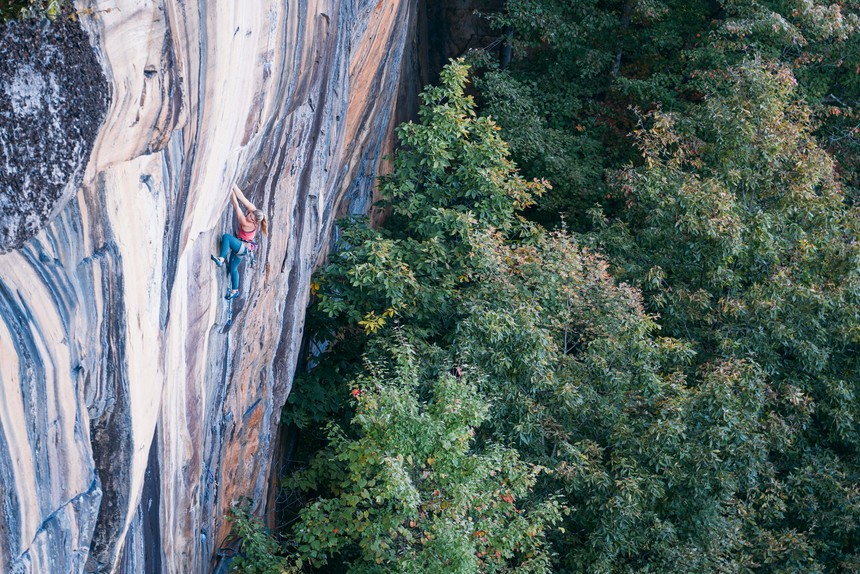 Hazel Findlay sport climbing in the South. Never Not Collective photo.
Hazel Findlay sport climbing in the South. Never Not Collective photo.
Each segment in the film feels pretty distinct and unique—was that your goal going into the project?.
LH: We wanted five individual stories that could stand alone outside of the film. We played around on how to create a narrative film, and I think that would be a challenging thing to do given what we had to work with. Especially with each segment, they’re all so different. Not just the athletes, but also the ways each part was filmed. For example, Isabelle’s segment, most of that footage came from her boyfriend on this old camcorder. We wanted to work that into the film, which ultimately gave her segment its own unique and interesting style.
In a way though, it just let the climbing speak for itself. I was impressed with how many female first ascents were featured in the film. Was that compelling to witness firsthand?
LH: Yeah! That’s happening all the time with those ladies. There are lots of first female ascents to be had, and there’s a big discussion in the climbing world whether the first female ascent is something notable. I think that’s such bullshit. It’s cool when a woman climbs and becomes the first woman to do something. In my opinion, it’s super notable and opens it up for other ladies.
Naturally, when I watch a woman do something I just relate to it. It makes it feel like those achievements are possible for even me. My husband probably feels the same when he watches a guy crush the Nose.
That’s why this is a problem we need to address when it comes to diversity. People of color have no one to relate to when they watch action sports movies, and frankly, it sucks.
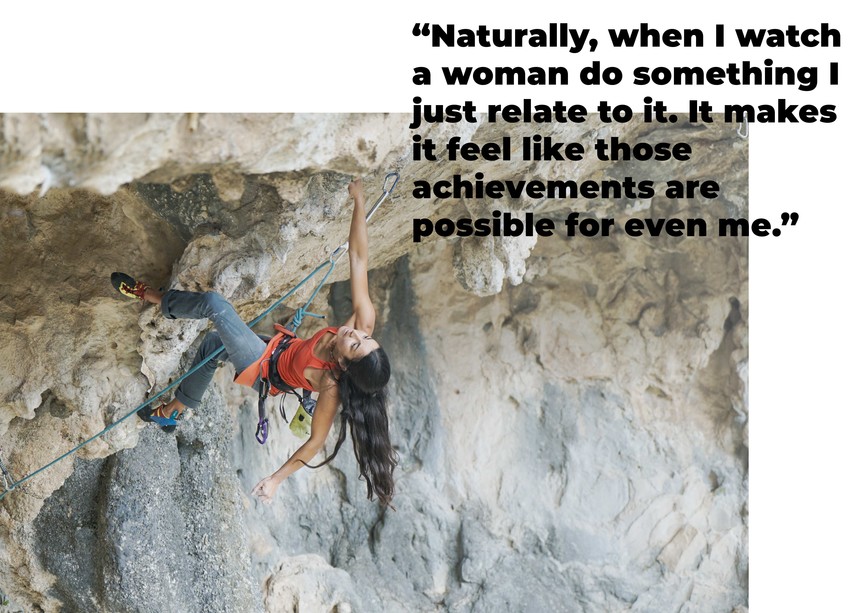
I think that brings us back to the whole point of all this. Representation matters.
LH: It’s such a valid thing. You need to see people who look like you, or else you don’t really think it’s for you. We crave that naturally as humans.
From watching these incredible women crush firsthand, did that inspire you in any way?
LH: I learned a lot from filming these women and watching them project. For example, seeing Fernanda go up a route and not be able to do most of the moves on her first try, then to have her come back five days later and send it taught me that not doing a move on a climb right away means you’re incapable. I just think of Fernanda and how she kept at it, and I can too.
That’s how climbing works. Sometimes you don’t get it first try, and then you do it. As long as you don’t give up!
 Watching these incredible women crush firsthand was one of the many highlights for the Never Not Collective team. Never Not Collective photo.
Watching these incredible women crush firsthand was one of the many highlights for the Never Not Collective team. Never Not Collective photo.
What were some of the highlights of the project?
LH: We were so lucky to have this opportunity to make this film. We learned that simply doing it was a privilege. There were a lot of challenges and we gave it everything we had. There are so many things we are grateful for, mostly because it gave us the ability to learn filmmaking. Plus, watching people enjoying it in a theater was so gratifying. We’re aware that it’s far from perfect. But we’re proud of the final product and I’m grateful for the learning opportunity even though it took three years and essentially was a part-time job that didn’t pay us.
Now too, I have the utmost respect and empathy for the guys behind Reel Rock, and honestly, anyone who makes a film.
Regardless of what people think of Pretty Strong, the film has created a new genre: Women’s climbing films. Hopefully, that will inspire more women to make films.
LH: We really want people to make more films like this—we’ll watch them! If people are thinking “I liked Pretty Strong, but I want to make something different,” then we’ll be psyched.
As long as you have a compelling story or subject, it doesn’t matter if you have the nicest camera. The only problem is that people need money to live and there’s a certain amount of privilege that comes along with the ability to pick up a camera and shoot a story without any funding. That plays a big role in the kinds of films we do see come out, unfortunately.
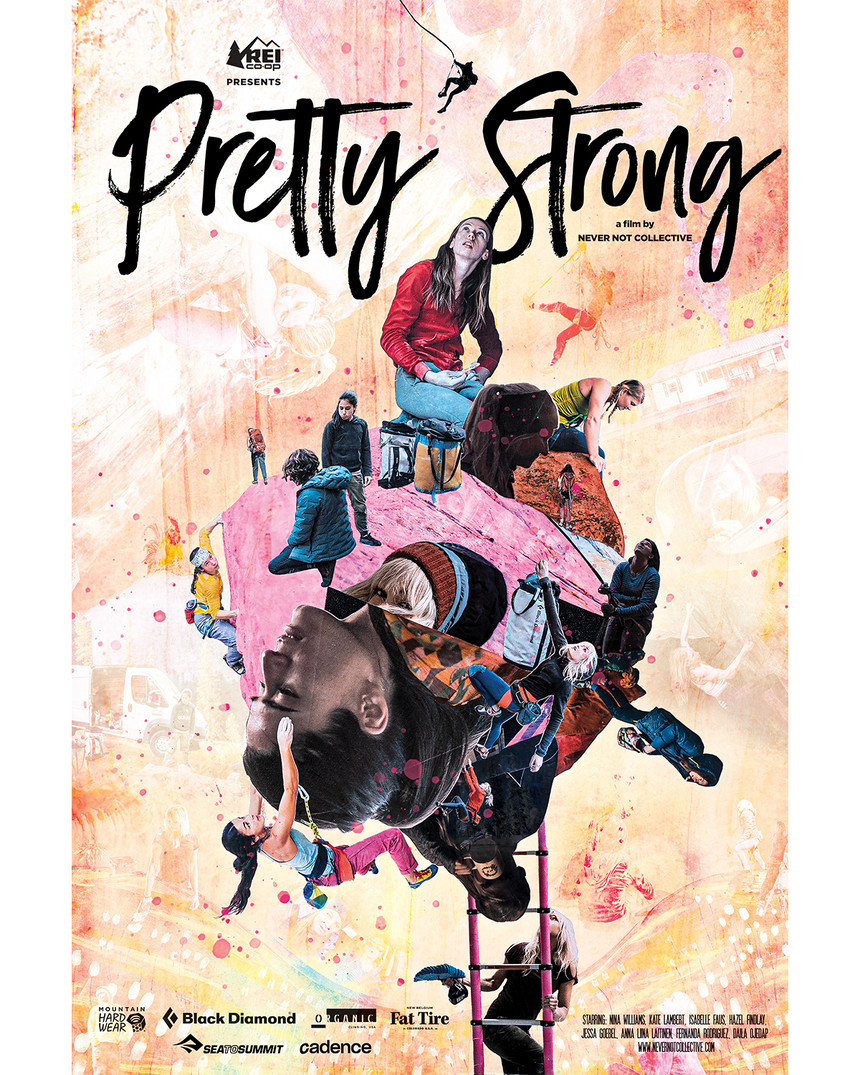 The Film is available for streaming now on vimeo!
The Film is available for streaming now on vimeo!



__video_thumb.jpg)


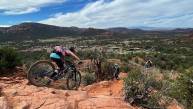


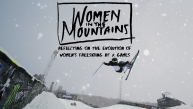



__video_thumb.jpg)
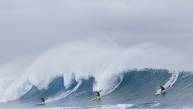
__video_thumb.jpeg)






